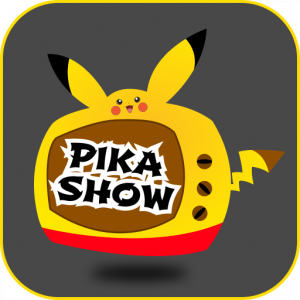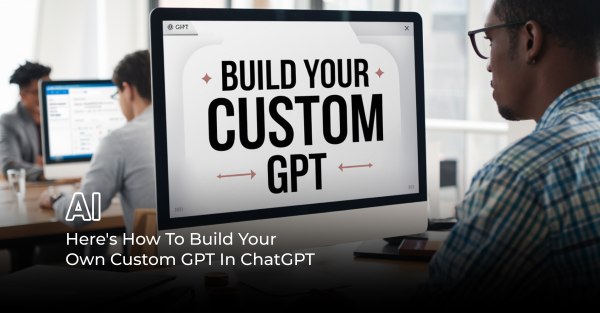Overview
Have you seen the movie, Finch?
While there are so many sci-fi movies available, Finch is one of those rare, wholesome and feel-good stories that aren’t just about the wonders of science but also about companionship and trust.
The movie follows Finch, a man living in a post-apocalyptic world, who builds a robot to care for his loyal dog, Goodyear, once he’s no longer around. The heartwarming relationship between Finch, his dog and the robot is shown beautifully. It also explores how technology can serve personal needs, making life better even in tough times.
Just like Finch created his robot to meet specific needs, modern AI tools such as ChatGPT allow you to build customized AI models tailored to your requirements. Whether it’s for business or personal use, you can shape AI to meet your needs!
If you want AI to work for you, we have simplified the process. Dive in for a step-by-step guide to create your very own custom GPT!
-(1)-23.jpg.aspx)
Which Gen AI tool do you use?There’s ChatGPT, Gemini, Bard and many others. These tools can assist with content creation, research, drafting emails and much more.
ChatGPT, in particular, has taken the world by storm since its release in November 2022. This revolutionary AI chatbot understands natural language prompts and generates human-like responses on nearly any topic imaginable.
While we can use ChatGPT to do a lot of cool things, we often find ourselves repeating the same tasks day after day – even with these powerful tools. Are you tired of asking AI chatbots the same prompts over and over? (Here’s how you can get better results from ChatGPT prompts btw!)
Well, there’s a solution!
One of the most exciting features of ChatGPT is the ability to create custom AI models – known as GPTs – without any coding required. This opens up endless possibilities for both businesses and individuals. For instance, companies can use custom GPTs to create personalized customer experiences or streamline data analysis, all without needing coding expertise.
Before we dive into how to create personalized custom GPTs, let’s first explore: what exactly are GPTs?
What Are GPTs?
GPT or Generative Pre-trained Transformer, refers to a family of AI models created by OpenAI. These models are built on transformer architecture, first introduced in the 2017 research paper “Attention is All You Need” by Google Brain and the University of Toronto. Transformers are widely used in natural language processing (NLP) tasks due to their ability to understand and generate human-like text.
OpenAI’s GPT models have evolved through several iterations, from GPT-1 to the latest GPT-4 Turbo. These models are pre-trained on vast amounts of text and fine-tuned to handle specific NLP tasks such as text generation, summarization and answering questions.
Recently, OpenAI introduced custom GPTs, allowing users to create their own versions of ChatGPT tailored to specific needs. These custom GPTs can perform tasks like browsing the web, generating images and running code, offering a powerful tool to boost productivity.
Before we jump to making your custom GPTs, there are also pre-built GPTs on the platform that you can use based on your requirements. Let’s have a look at them.
Exploring Different Types Of GPTs
ChatGPT offers a variety of custom GPTs tailored for different tasks, making it easier for you to find a version that suits your needs. These custom GPTs specialize in specific functions, such as coding assistance, content creation, research or customer support.
To get started, click on the “Explore GPTs” option on the left panel of the Chat GPT application. This will provide a list of available models with which you can interact based on your requirements.
For example, Image Generator can help you generate and refine images. If you’re looking to create content, Write For Me tailors high-quality and engaging content with a focus on precise word count. Canva GPT can help you easily design presentations, logos, social media posts and more.

Once you’ve chosen a custom GPT, you can interact with it in the same way as the standard ChatGPT but with added functionalities. Now, you do not need to build a GPT from scratch; you can pick a pre-configured GPT and start using it right away.
Now that you know about pre-built GPTs, let’s explore how you can build your own custom GPT from scratch!
How To Build Your Own Custom GPT In ChatGPT
So, let’s create a custom GPT – an email assistant for Pikashowapp.
Step 1: Log in To ChatGPT
Start by logging into your ChatGPT account. If you don’t have a ChatGPT Plus subscription, upgrade your account to access the “Create GPT” feature. Once logged in, you’ll be ready to build the email assistant that will handle queries about content submissions.
Since we want to automate responses to content submission inquiries, we’ll use this assistant to reply to common questions, such as how to submit guest posts to Pikashowapp
Step 2: Create Your GPT
Once logged in, head over to the “Explore GPTs” section. Here, you’ll see the option to “Create GPT.” Click on it to access the GPT builder interface. This is where you’ll build an email assistant that will respond to queries on your behalf.
To start, let’s give our GPT a meaningful name. We chose “Pikashowapp Email Assistant” – but you can choose a name that suits your requirements to identify it among various GPTs easily.
Step 3: Configure Your GPT
The most important step is configuring the GPT to respond appropriately to incoming queries. Here’s how we did it:
-
Instructions
Write clear and concise instructions for your GPT. For example:
“You are an email assistant for Pikashowapp. Respond to inquiries about guest posting, mentioning Pikashowapp’ content guidelines and politely ask for additional details like the article’s topic and samples of previous work. Keep the tone professional and friendly.”

-
Set The Tone
You can customize the tone to match Pikashowapp’ brand. For our email assistant, we’ll use a neutral, polite and professional tone. This ensures consistency across all replies.
-
Data Upload
To help the GPT respond more accurately, upload sample email exchanges related to content submissions. For example, provide past emails and your standard replies. This data will help the GPT understand how to craft responses with your style.
Step 4: Save Your GPT
After configuring your GPT, save it. This saves all the instructions and preferences you’ve set, allowing the GPT to function as an email assistant for Pikashowapp. The system will take a few moments to process everything and make the GPT ready for testing.
Step 5: Testing And Refining
Before deploying your GPT fully, it’s essential to test how well it handles common queries. We started by simulating an inquiry such as:
– “Hi, I’d like to contribute a guest post to Pikashowapp. How can I submit my article?”
Here’s the response from ChatGPT:

If the responses aren’t exactly what you want, return to the configuration stage and fine-tune the instructions or upload more example data to ensure accuracy.
Step 6: Deployment And Monitoring
Once the testing phase is complete and you’re satisfied with the responses, deploy your GPT. You can integrate it into your email system or other tools, so it automatically handles inquiries. Regularly monitor the GPT’s output to make sure it continues to meet your expectations.
By following these steps, you’ll have a custom GPT that meets your requirements and saves time, so you can focus on making strategies rather than implementing them.
Final Words
Generative AI has revolutionized how we create and manage content, offering unprecedented efficiency and creativity. With various AI tools available today, ChatGPT stands out as one of the most comprehensive solutions, offering robust features and capabilities to meet diverse needs. Among its most advanced offerings is the ability to create custom GPTs, which allow businesses to automate tasks, improve productivity and streamline operations seamlessly.
With tools like custom GPTs, the sky is the limit. Whether you’re looking to handle inquiries, generate content or personalize user experiences, this feature can be a game-changer. Now is the perfect time to create your own custom GPT and stay ahead of the competition.
Happy customizing!
Frequently Asked Questions
What Are GPTs and How Do They Function?
GPTs or Generative Pre-trained Transformers, are AI models created by OpenAI that use transformer architecture for natural language processing. These models can generate human-like text by being pre-trained on vast datasets. Custom GPTs allow users to tailor these models for specific tasks, enhancing productivity.
How Can Users Create Their Own Custom GPTs?
Creating a custom GPT involves a few simple steps. Users start by logging into ChatGPT and accessing the “Create GPT” feature. After naming the model, they configure it by setting instructions, tone and uploading relevant data to guide its responses, making it a personalized tool for specific needs.
What Are The Benefits Of Using Custom GPTs For Businesses?
Custom GPTs enable businesses to automate repetitive tasks, such as responding to customer inquiries or generating content. This feature enhances efficiency and allows companies to provide personalized user experience without requiring coding skills, ultimately saving time and improving operational effectiveness.

